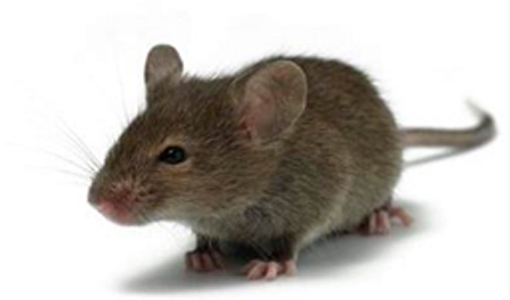Rats and mice are serious pests of human and they can, in some cases, be difficult to control.
The presence of rats and mice in building is usually regarded as undesirable from the viewpoint of food spoilage and contamination physical damage, and the transmission of diseases to humans.


Black Rat - (Pellets)
The black rat, also known as the ship rat, roof rat or house rat, is a common long-tailed rodent of the genus Rattus in the subfamily Murinae. Black rats are generalist omnivores. Black rats are generalist omnivores. They are serious pests to farmers as they eat a wide range of agricultural crops.
- Mass: 110 – 340 g (Adult)
- Lifespan: 12 months (In the wild)
- Scientific name: Rattus rattus
- Length: 32 – 46 cm (Adult)

Brown Rat - (Wax Block)
The brown rat, also known as the common rat, street rat, sewer rat, Hanover rat, Norway rat, Norwegian rat, Parisian rat, water rat or wharf rat, is one of the best known and most common rats
- Mass: 230 g Encyclopedia of Life Lifespan:
- 2 years (In the wild) Scientific name: Rattus norvegicus
- Trophic level: Herbivorous Encyclopedia of
- Life Gestation period: 21 – 24 days

Mouse (Glue Board)
A mouse, plural mice, is a small rodent characteristically having a pointed snout, small rounded ears, a body-length scaly tail and a high breeding rate. The best known mouse species is the common house mouse. It is also a popular pet.
- Scientific name: Mus musculus.
- Lifespan: African pygmy mouse: 2 years
- Gestation period: House mouse: 20 days, African pygmy mouse: 20 days, Ryukyu
- mouse: 18 days, Fawn-colored mouse: 18 days Encyclopedia of Life
- Mass: House mouse: 19 g, African pygmy mouse: 3 – 12 g,
- Length: African pygmy mouse: 3 –8 cm, Steppe mouse: 7.5cm
Eating and contamination of stored foods
Rats and mice are responsible for enormous losses of food in store, either by directly eating the foods or by rendering them inedible through contamination. As the rodents move in and around stored foods, they contaminate the food with drop-pings (of which often more than 50 per day are produced), urine (which tends to be sprinkled on surfaces over which they travel) and hairs. At times, poultry may be killed and eaten by rats.
Gnawing: physical damage
The constant gnawing of rodents can be the cause of serious damage to a range of materials. Typically, they may damage doors, skirting and other parts of buildings, upholstery, hooks, food containers or packaging, and parts of equipment or machinery. The gnawing of wires and cables has caused the breakdown of telephone systems and short-circuiting, which may result in equipment breakdown or, at worst, very costly fires. Fire damage has also resulted from the gnawing of matches collected in thenest.
Disease transmission
Historically, the role that rats and mice have played in the transmission of diseases to humans has been of profound importance. The Black Death (bubonic plague), which claimed more than 25 million lives in fourteenth-century Europe, is perhaps the most documented case history of rats and disease. The plague bacterium (Yersinia pasties) was trans-mitted from rat to rat (ship rats) and from rat to human by the Oriental rat flea. The incidence of plague has not been entirely wiped out, but closer understanding of the mechanism involved has seen much reduction in the occurrence of this dreaded disease.
Among the many diseases transmitted to humans by rodents, perhaps the most insidious and widespread problem involves the distribution of food-poisoning organisms (eg Salmonella bacteria). Unfortunately, the nature of disease organisms of this type is such that it will always be difficult to pinpoint, without any doubt, the cause of disease transmission. It is very likely that rats and mice play a significant role in the transmission of such diseases, particularly those which are gastro-intestinal and somewhat difficult to track back.
Rats and mice may transmit disease to humans by a variety of means:
Many people are annoyed or scared by the sight of cock-, roaches. This may be related to their fast, unpredictable movements and perhaps very spiky legs. Many find their presence abhorre
Rats and mice may transmit disease to humans by a variety of means:
- Contamination of food or utensils with rodent urine or faeces. Examples: Salmonella food poisoning (bacteria carried by mice or rats), choriomeningitis mild meningitis (virus carried by mice), Weil's disease, infectious jaundice (bacteria), tapeworm.
- Contamination by direct contact with urine or faeces, where bacteria seem to enter the skin through small scratches; for example, Weil's disease.
- Indirect contamination via blood-sucking insects (ie ectoparasites such as fleas); for example, bubonic plague (Black Death bacteria, via fleas), murine typhus fever (Rickettsia, via fleas).
- Indirect contamination via pets to humans; for example, favus, skin disease (fungus from mice to pets to humans).
- Contamination by directly biting humans; for example, rat-bite fever, relapsing fever (bacteria).
- Indirect contamination by being eaten by an intermediate carrier; for example, trichinosis (worm-infested rodent eaten by pig, worm-infested pig eaten by human). Rats and mice in buildings pose a serious threat to human health. The disease threat alone is justifiable cause for concern and for the implementation of sound control procedures.